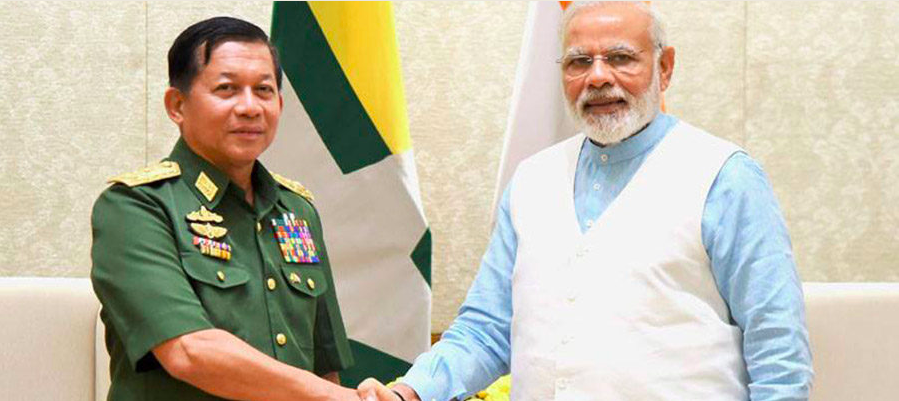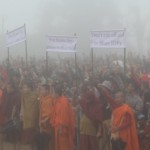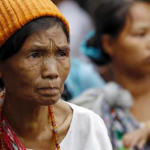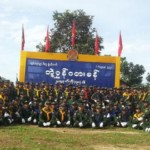By Joe Kembun / The Irrawaddy | August 4, 2017
The Myanmar Army has shown—evermore visibly and publicly—that it is strengthening its forces. Recently, Commander-in-Chief Snr-Gen Min Aung Hlaing toured Japan, India, Russia, Israel, Pakistan and Europe—in many cases he was chasing arms deals. It is clear that the Myanmar Army is seeking to replace its current outdated arsenal with modernized weaponry to beef up its military capability.
Several questions come from the recent moves of the Commander-in-Chief: What motivates the Myanmar Army to modernize its military capability when it’s clearly time for reconciliation in Myanmar to end the country’s decades-long civil war? Is the Tatmadaw seeking to wipe out ethnic armed organizations (EAOs)? If so, who will support the military? If not, what is their policy toward EAOs?
Only the commander-in-chief himself can answer these questions; we are forced observe the military’s moves, and speculate.
The Tatmadaw’s Strategies
Based on observations, one possible goal of the Myanmar Army is to wipe out all EAOs. The victory of the Sri Lankan army over the Tamil Tigers provided inspiration to the Myanmar Army—a prominent retired general “Bullet” Hla Swe highlighted the armed group’s surrender when he was interviewed by the BBC in 2013.
If the Myanmar Army is to eliminate the EAOs, it will squeeze the different groups, one-by-one, step-by-step. The Myanmar Army has been implementing its infamous “Four Cuts” strategy (Phet Lay Phet in Burmese) by cutting off food, finance, recruits and information to weaken the EAOs.
The Tatmadaw have been targeting natural resources that support EAOs. The government military has launched serious offensives against areas where lucrative natural resources such as gold, amber, jade, and teak are extracted. The Tatmadaw’s recent operations against the Kachin Independence Army (KIA) in Tanai Township, Kachin State—in amber and gold mining areas—is a classic example of the military’s “Four Cuts” strategy.
The Myanmar Army has been using Article 17(1) of the Unlawful Associations Act as a tool for weakening EAOs. The Army has charged many civilians, particularly ethnic minorities on suspicion of affiliating with EAOs. In doing so, communication between EAOs and the public has been hampered, weakening the organizations.
Less subtly, the Myanmar Army has launched large military offensives with combined ground forces, artillery fire, and airstrikes against EAOs. In the last five years, the KIA has lost most of their strategic outposts from these fierce attacks—Hka Ya Bum, a strategic peak just five miles from KIA headquarters in Laiza, Bum Tawng, Hpun-pyen Bum, Gideon, Lai Hpawng, and the No. 6 battalion in Hpakant and No. 8 Brigade in Indawgyi have both been displaced. The Myanmar National Democratic Alliance Army (MNDAA) in the Kokang region has also lost a number of strategic outposts recently.
Looking East
The Myanmar Army realizes, however, that it could not fulfill a goal of wiping out EAOs without external support, particularly from China. The Myanmar Army increasingly ties itself with China—perhaps with this end in mind—particularly where groups straddle the Myanmar-China border.
China practices two notable policies towards Myanmar. The first policy is to protect the Myanmar Army from international punishment. China diplomatically shields the Myanmar Army from any scrutiny and punishment meted out at the UN Security Council (UNSC). On March 17, 2017, for instance, China and Russia blocked a short UNSC statement expressing concern with the situation of human rights in Myanmar after a 15-member body met to discuss the situation in Rakhine State. China also vetoed a UN draft resolution on Myanmar in January 2007.
The second policy is to drive out from China any potential supporters of EAOs. The central government in Beijing, following President Xi Jinping’s anti-corruption campaign, has pressured officials in the southern province of Yunnan suspected to be involved with ethnic armed groups in businesses such as mining, logging, and other joint venture—often through intricate business ties.
According to Tengxun News, Beijing arrested and investigated eight senior officials—former Communist Party deputy secretary Qiu He, Kunming executive deputy mayor Li Xi, former Yunnan vice governor Shen Peiping, former Communist Party provincial secretaries Qin Guangrong and Bai Enpei, former Communist Party secretaries of Kunming city Gao Jinsong and Zhang Tianxin, and Kunming deputy mayor Xie Xinsong in Yunnan Province within the three years between 2013 and 2016. Beijing suspected that these people were affiliated with some EAOs such as the KIA, the MNDAA, and the United Wa State Army (UWSA).
In March 2017, a state-owned Chinese bank—the Agricultural Bank of China (AgBank)—suspended accounts being used to crowdfund the MNDAA. On June 15, 2017, Chinese authorities froze over 5,000 accounts in border areas in what they called a crackdown on money laundering, gambling, and crime, in an attempt to increase border trade stability.
The Myanmar Army does not want EAOs doing business with people in China because it fears that income from illicit trades will be laundered. Perhaps as a quid pro quo, the Myanmar Army allows China to pour huge investments into Myanmar in a number of different sectors. China is hungry for resources to implement its “One Belt, One Road” initiative. Thus, China is investing billions of dollars into an oil and gas pipeline starting from Kyaukphyu on the Bay of Bengal in Rakhine State as well as building hydropower facilities in Mong Ton in Shan State and the Myitsone Dam in Kachin State (which is currently suspended), and many more.
Looking West
The Myanmar Army, however, recently shifted towards India. Commander-in-Chief Snr-Gen Min Aung Hlaing made an eight-day visit to India in July 2017 and met with Prime Minister Narendra Modi, Minister of Defense Arun Jaitley and National Security Advisor Ajit Doval
According to the Indian Military News, the Tatmadaw made a major deal with India in March 2017 to buy torpedoes for their Navy—a deal worth US$37.9 million. It is not the first such deal between the two countries—the Tatmadaw has received rocket launchers, mortars, radars, night-vision devices, bridges, and communication devices, as well as road construction equipment like bulldozers, tippertrucks, and soil compactors.
India is keen to supply Myanmar’s naval revamp, previously dominated by China. India has largely disregarded China’s expanding footprint in Myanmar—the only Asean country with whom it shares land and maritime boundaries. India wants further diplomatic, economic and military cooperation with Myanmar.
Close ties between the two nations may have several benefits, but the major reason for close cooperation for the Myanmar Army is as a bargaining chip. The Tatmadaw wants China to know that if the country supports EAOs on its borders, Myanmar can veer toward India for military sourcing and lucrative investment projects.
Undeniably, the Myanmar Army could probably wipe out some EAOs that lack the military capability to defend themselves, but it would fair less well with larger groups. Unlike Sri Lanka, Myanmar hosts several strong EAOs, particularly the UWSA, which boasts estimate troop numbers of 30,000. It would be a false presumption that the Myanmar Army could continue to wipe out all EAOs.
The Myanmar Army would do best to negotiate and settle an agreement with non-state armed groups to bring peace to the country. Further pushing, taunting, and bullying of EAOs will only disrupt the country’s bid for peace and increase deaths. No citizen wants casualties to continue.
Joe Kumbun is the pseudonym of a Kachin State-based analyst.







![‘The Burma Army Killed Him [Saw O Moo] – At Least the Government or the Army Should Commit to Not Do This Again’: Paul Sein Twa, Executive Director of KESAN](https://www.burmalink.org/wp-content/uploads/2018/05/Saw-O-Moo-commemoration-Paul-Sein-Twa-speaking-2-150x150.jpg)